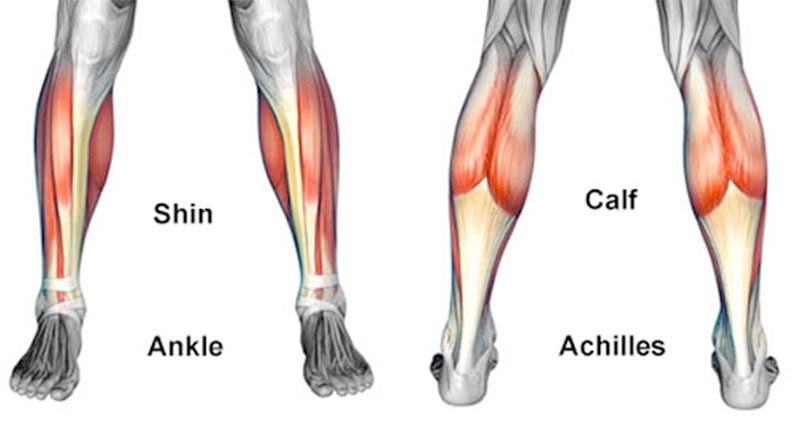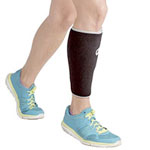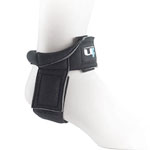Lower leg pain includes the shin, calf, ankle and Achilles tendon. Most common lower leg injuries include Calf strain, Shin splints, Ankle Sprains & Achilles tendonitis.
Calf pain
Calf pain occurs at the back of the lower leg and is either sudden onset (acute), or occurs gradually over time (chronic).
The most common causes include:
- Calf strain – a torn calf muscle at the back of the lower leg.
- Cramp – a sudden, acute onset muscle spasm/contraction.
- Compartment syndrome – is where the muscle swells up too large for the sheath surrounding it.
- Deep Vein Thrombosis – is a blood clot and should not be missed!
View all calf injuries
Shin pain
Pain in the shin is usually of gradual onset and can be difficult to get rid of. These are the most common causes:
- Shin splints – is a widely used term to describe pain on the inside of the shin. Medial tibial stress syndrome is probably a more accurate description of most injuries.
- Anterior compartment syndrome – causes pain on the outside front of the shin.
View all causes of shin pain.
Ankle pain
We have separated ankle pain into the following categories:
Acute ankle injuries
These occur suddenly and include sprains, strains & fractures. Most common are:
- Ankle sprain – tearing or stretching of ligaments, usually on the outside of your ankle.
- Ankle fracture – broken ankle where any of the bones in the ankle break.
View all acute ankle injuries.
Inside of the ankle
This is also called medial ankle pain and occurs or develps gradually over time:
- Tibialis posterior tendinopathy – (tendonitis) is an overuse injury causing pain on the inside of the ankle, which may radiate under the arch of the foot.
- Medial calcaneal nerve entrapment – has similar symptoms to that of tarsal tunnel syndrome. Pain radiates from the inside of the ankle, under the heel, and into the arch of the foot.
- Tarsal tunnel syndrome – nerve compression causing burning pain in the foot, sometimes with pins and needles or numbness. Pain may radiate into the heel and arch of the foot.
View all medial ankle pain causes.
Outside of the ankle
Also known as lateral ankle pain. Some common causes are:
- Sinus tarsi syndrome – The Sinus tarsi is a small bony canal that runs into the ankle under the talus ankle bone. The damage can be caused by overuse or by a sprained ankle.
- Peroneal tendon dislocation – repeated dislocation or slipping of the peroneal tendons over the outside of the ankle causes friction, pain, and inflammation.
- Peroneal tendonitis – is an overuse injury causing inflammation and/or degeneration of the peroneal tendons on the outside of the ankle.
View all causes of lateral ankle pain.
Achilles pain
Achilles tendonitis is a common cause of achilles pain. However, Achilles pain is caused by a number of factors.
View all causes of Achilles pain.
Lower leg pain rehab programs & exercises
- Ankle sprain rehabilitation – a full step by step treatment and rehabilitation program for sprained ankles.
- Shin splints exercises – treatment and exercises for shin pain.
- Achilles tendonitis exercises – treatment and rehab for Achilles pain.
When to seek medical advice about lower leg pain
Seek professional medical advice if you have severe pain especially when walking. Or if you have severe swelling (oedema) in the ankle or leg.
If you hear an audible ‘pop’ or ‘crack’ in the ankle joint, particularly if painful at the back of your ankle. This may indicate a ruptured Achilles tendon. In which case it is important to get it checked out asap. It is possible to rupture your Achilles tendon without realising it. So if in doubt, seek advice from a professional.
Seek advice if your ankle ‘locks’ whilst trying to move it. Or if you have altered sensation in the foot or ankle. In particular a feeling of ‘pins and needles’ (paresthesia) or a ‘loss of feeling’ (anaesthesia) in your ankle or lower leg because is often an indication of nerve damage.
Finally, if you are unable to complete your normal daily activities after an initial 72 hours rest period. This is the acute stage where you should rest and apply cold therapy and compression.










